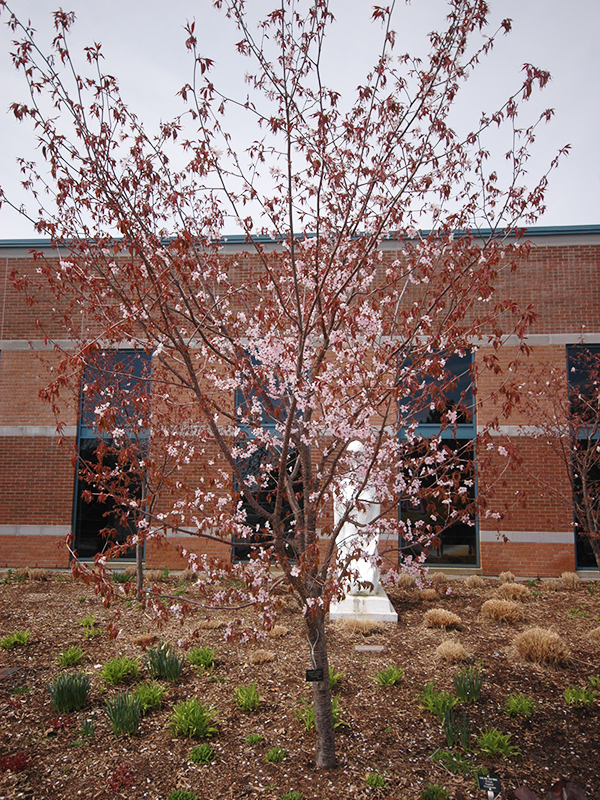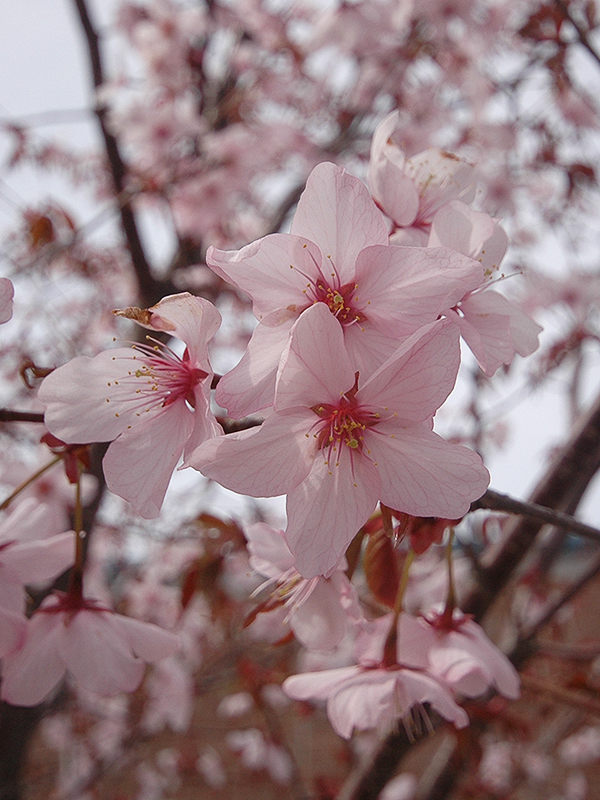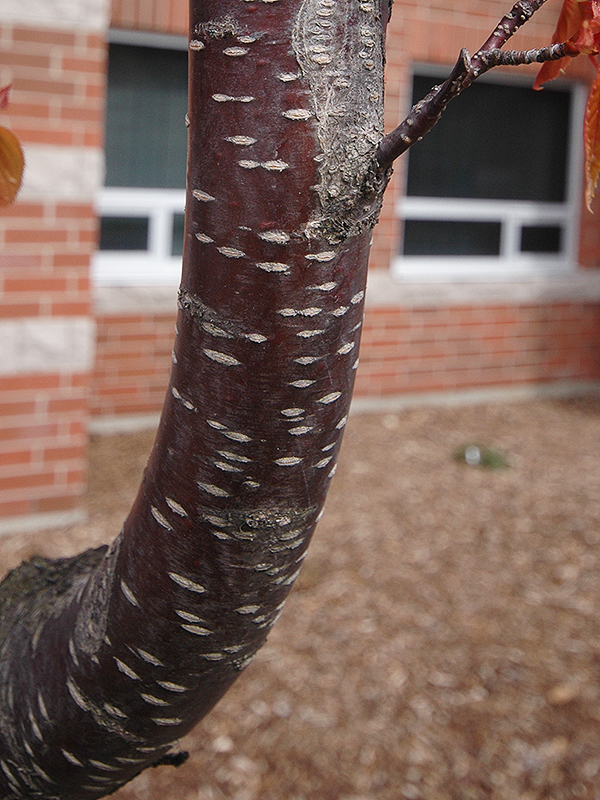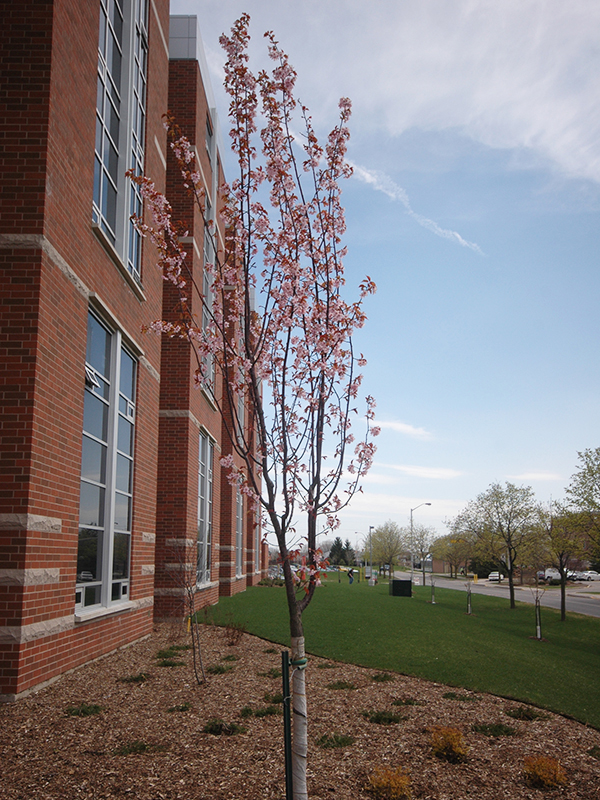
Woody > Prunus > Prunus sargentii > Prunus sargentii
Prunus sargentii
Sargent Cherry
Origin: Japan.
Mike's
Opinion


"
An ornamental or accent tree that should be planted more often in the landscape. Makes an ideal shade tree and creates a serene feel to the landscape. This tree is a true 'Sleeping Beauty': while dormant, displays beautiful polished chestnut bark then awakening in the spring to produce clustered pink blooms changing in the autumn to a magnificent display of colour. No matter the season the tree is always stunning.
Michael Pascoe, NDP., ODH., CLT., MSc. (Plant Conservation)
"
| Family |
| Rosaceae |
| Genus |
| Prunus |
| Species |
| sargentii |
| Category |
| Woody |
| Type |
| Tree (deciduous) |
| Pronunciation |
| USDA Hardiness Zone |
| 4 - 7 |
| Canadian Hardiness Zone |
| 4a - 7a |
| RHS Hardiness Zone |
| H5 - H7 |
| Temperature (°C) |
| (-35) - (-12) |
| Temperature (°F) |
| (-30) - 10 |
| Height |
| 6-9 m |
| Spread |
| 6-9 m |
Photographs
Description and Growing Information
Flowering Period
| General Description |
| Upright with a spreading or rounded crown, canopy forming low on the tree. The fragrant pink flowers blooming before the leaves unfold and having showy autumn colours of yellow, orange and red. Has the ability to thrive in colder climates. |
| Cultivation |
| Easy to transplant. Thrives in well-drained, acidic to neutral soil, although is drought tolerant. Best in full sun but can be sustained in part sun. Avoid planting in smog or polluted environments. |
| Shape |
| Upright with a spreading or rounded crown. Usually the canopy forms low on the tree. |
| Growth |
| Fast |
| ID Characteristic |
| Has a sharply toothed and long leaf margin. Buds grow in clusters of two at the apex of the stem, arranged alternately thereafter. Bark chestnut to reddish brown with raised horizontal lenticels. |
| Pests |
| None serious; has good resistance to pests and diseases that usually affect other Prunus species. Plum Pox: Symptoms may be confused with other diseases/disorders such as nutrient deficiencies or pesticide injuries. PPV symptoms can occur on leaves, flowers and/or fruit. Faint yellow rings or lines may be found on the leaves. PPV generally does not cause plant mortality however, can reduce the plant productivity and longevity. How to Reduce the Spread and Impact of PPV: 1. Propagate vulnerable Prunus trees and shrubs outside of the affected area a. Isolation is important to protect clean plants from future spread of the disease. b. Propagating and growing vulnerable plants away from the virus-infected area reduce the likelihood of the disease spreading any further. This should be as far away from the quarantined area and any potential sources of the virus. 2. Propagate Prunus plants with virus-free Budwood and Rootstock from virus tested mother trees a. This eliminates the propagation link for viral diseases. 3. Inspect vulnerable Prunus for symptoms a. All Prunus shrubs and trees should be visually inspected for symptoms at lease twice per year and conducted by trained personnel familiar with the virus. b. Any plants found to be infected should not be moved or sold and must be reported to the Canadian Food Inspection Agency immediately. c. Inspections should not be conducted in periods of hot weather (temperatures over 30˚C). 4. Manage aphid vectors a. Aphids are extremely attracted to suckers (vegetative shoots at the base of the tree), these should be removed to avoid aphid colonization, feeding or migration. 5. Plant tolerant and resistant varieties a. When available, grow plum pox tolerant or resistant Prunus varieties. |
| Habitat |
| Mountain slopes of Japan. |
| Bark/Stem Description |
| Added beauty, glazed, smooth dark chestnut to reddish brown with raised horizontal lenticels. |
| Flower/Leaf Bud Description |
| Narrow and oval with overlapping scales, 1 cm long in length, a shiny reddish-brown in colour. At apex, buds are grouped together often having 2 buds at the nodes. |
| Leaf Description |
| Arranged alternately, simple, elliptical-obovate, 5-12 cm long, apex acuminate, margin sharply toothed and long pointed, slight waxy bloom on underside. New leaves unfold to a reddish or bronze changing to a shiny dark green. |
| Flower Description |
| Having five petals and formed like a star. Single, fragrant and pink about 3-4 cm in diameter. Grown in clusters, usually grouped 2-6 on pedicels 2.5 cm long. Flowers before leaves unfold. Sight is spectacular when in bloom. |
| Fruit Description |
| Coloured dark purple to black, small, 8 mm across and egg shaped. Although not easily seen on the tree, the fruit will attract birds. |
| Colour Description |
| The shiny dark green leaves change into a stunning display of yellows, oranges and reddish bronze. Shows great autumn colour that adds value to any landscape. |
| Texture Description |
| Medium texture. |
| Notable Specimens |
| The Gardens of Fanshawe College, London, Ontario, Canada. University of British Columbia Botanical Garden, Vancouver, British Columbia, Canada. |
| Propagation |
| Requires 2-3 months cold stratification. Place under a covered cold frame to prevent overheating. Stuck in sand/peat with 3,000-5,000 ppm IBA quick dip and mist. |



